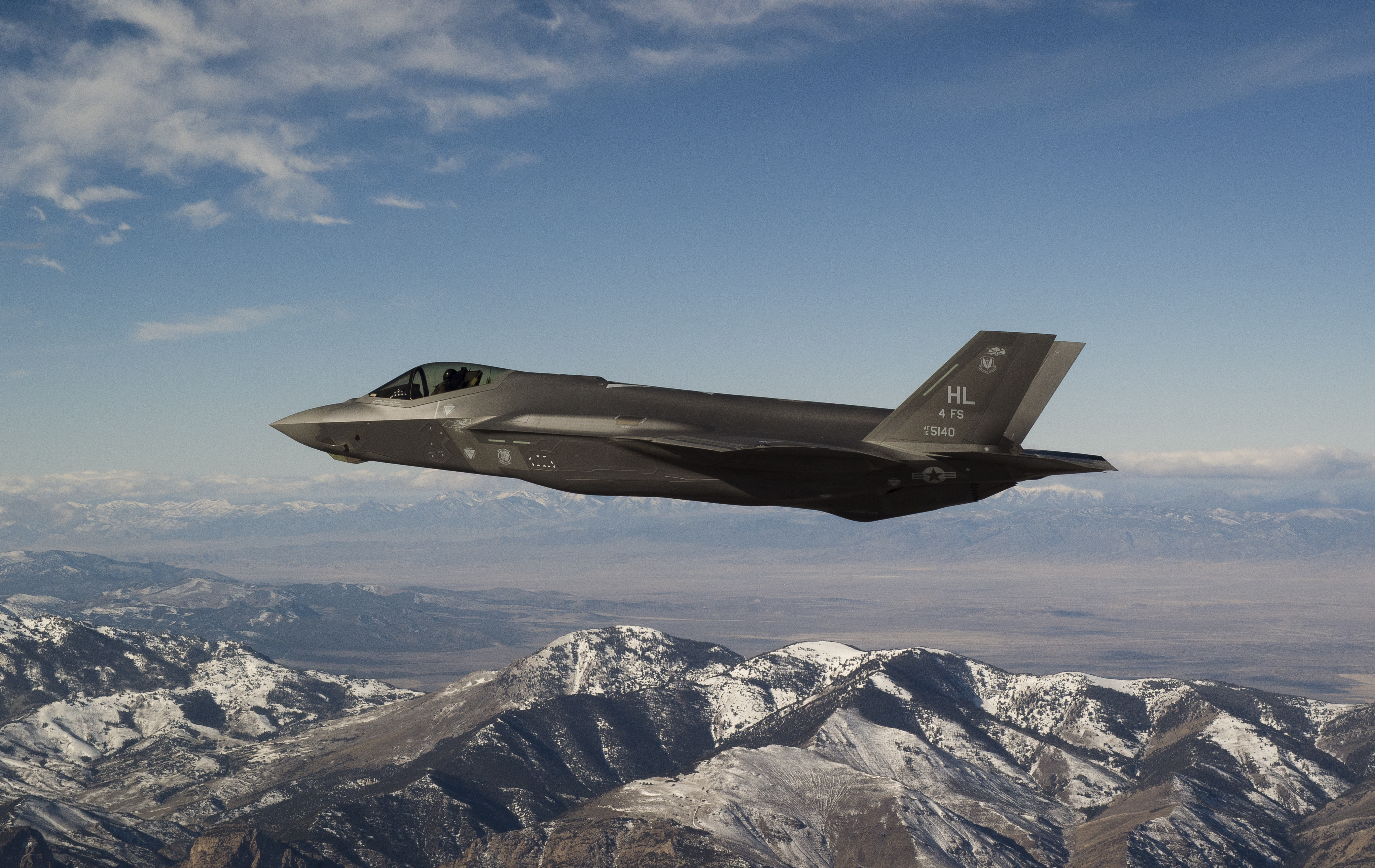
A USAF F-35A Lightning II conducts flight training operations over the Utah Test and Training Range on Feb 14, 2018. USAF photo by SSgt. Andrew Lee.
The Air Force has 55 fighter squadrons, but “we think we need 70,” USAF Lt. Gen. Jerry Harris, deputy chief of staff for plans and requirements, said at a McAleese/Credit Suisse conference Tuesday.
Harris revealed the Air Force goal in the context of explaining long-term budget decisions and tradeoffs. Though the goal is 70 fighter squadrons, “we’ll fix the 55 first,” by fully equipping them with aircraft, upgraded capabilities, and enough pilots and maintainers to operate them, he said.
He also noted that the Air Force remains committed to replacing its old iron with fifth generation aircraft like the F-35, aiming to eventually retire the F-15, F-16, and A-10, but not for some time yet. When the Air Force moves on to sixth generation aircraft, “then we’ll stop buying fifth gen,” he said. The F-15s and F-16s get new radars and other “cost-effective modernization,” and some of the A-10s will get new wings, he said. But the goal remains to replace fourth-gen with fifth-gen aircraft for the time being.
It will take a long time to get to 70 squadrons, though, Harris said, noting that USAF is only buying 48 F-35s a year. The goal is to get to 54 per year ”toward the end of the FYDP,” or future years defense plan, but it will take upwards of 80 a year to start making a dent in the average age of the Air Force fighter fleet, now at about 27 years. The ramp rate for Air Force F-35s should move up to “75-100” a year by around 2023, Harris said. Only “by the late ‘20s do we get to a 50-50 fleet” of fighters, divided between fourth- and fifth-gen types, he noted.
The F-22 and F-35 will also get upgrades in the Fiscal 2019 budget request, Harris noted. To go with them, USAF will need fifth-generation weapons to succeed those that were built to equip the fourth gen, he said.